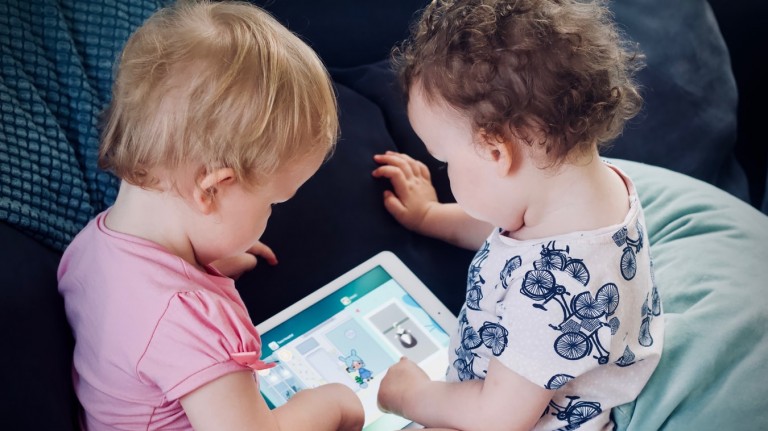The often perplexing world of screen-time research has some new findings—one pretty obvious, and one a bit strange.
The mom effect, part 1: The first of two studies published today in the journal JAMA, led by Sheri Madigan at the University of Calgary, used survey data to see whether preschoolers were meeting World Health Organization guidelines for screen time, which recommend no more than an hour a day for that age bracket. Madigan and her colleagues found that almost 80% of two-year-olds and nearly 95% of three-year-olds were on screens for longer than an hour. Moms who spent large amounts of time on their respective devices tended to have kids who did, too.
The mom effect, part 2: In the second study, Edwina Yeung at the National Institutes of Health and colleagues untangled how kids were picking up screen habits in the first place. Yeung’s team looked at data from 3,895 children in two groups: one between the ages of 1 and 3 and one group of kids around 8 years old. They examined several factors that could influence screen time, including the number of siblings a child had, parents’ income, education level … and maternal screen use, which again stood out as a factor. Interestingly, so did the number of kids in a family—moms with more than one kid had children who spent more time on screens.
Are we seriously blaming moms? Moms bear the brunt of the blame in these studies because that’s how this kind of research has always been done. That allows data collection, analysis, and comparisons between data sets to stay consistent over time (in Yeung’s work, data was collected in two batches between 2007 and 2019). It also leaves out a huge chunk of the typical parenting equation. Both Yeung and Madigan noted that data on both dads and overall parental involvement (or lack thereof) in screen time is due to be incorporated in this kind of research soon.
Old habits die hard. In Yeung’s study, 8-year-olds overall spent significantly less time in front of screens than younger kids—likely because that’s when they start devoting a chunk of their day to school. But heavy exposure to screens carried over into later years. “What was novel was that increasing amounts of screen time, even between 1 and 3 years old, corresponded with an increase in screen time even after reaching school age,” Yeung said in an email.
Who are the kids with low screen time? When infants are at daycare, they take part in “structured group play apart from screen time.” Yeung’s data also suggests a link to parental graduate degrees.
All screen time is not created equal: The screen-time debate has been confusing, with some experts pointing to quality over quantity, and others suggesting that it’s changing the very structure of kids’ brains. Still, Madigan and Yeung say that more parental involvement and less screen time is preferable. “You can think of screens like giving junk food to young children,” Madigan says. “In small doses, it’s okay. But in excess, it has consequences.”
Parenting with tech is a whole new—and tricky—world. Is it surprising that harried moms are using iPads as impromptu babysitters? In America, not really. What makes these studies especially important, though, is that they show how parents’ technology use becomes a model for kids, with long-lasting effects for kids over time.

